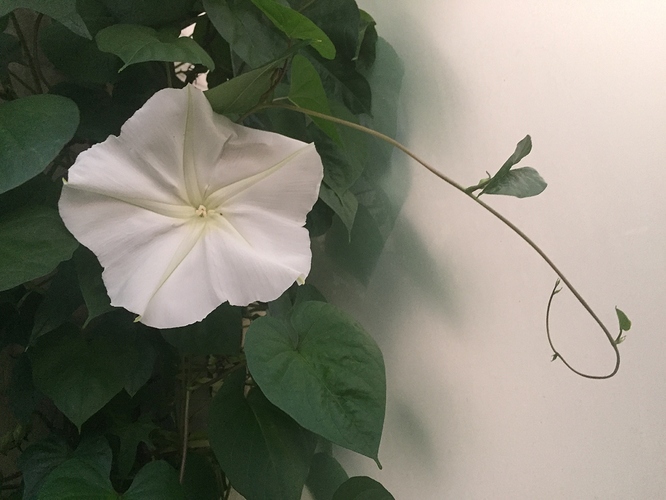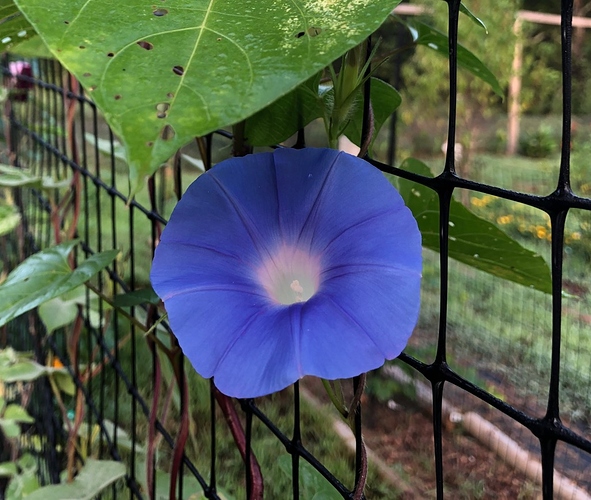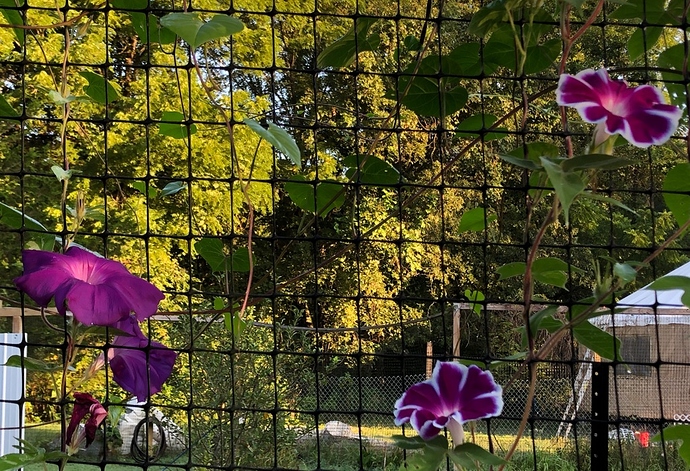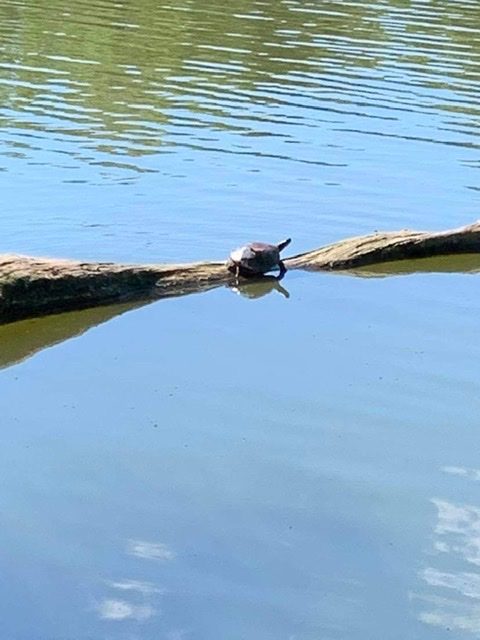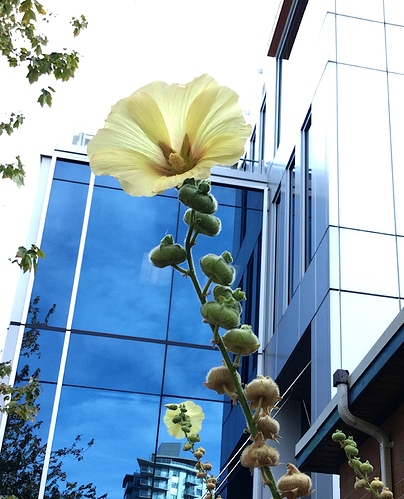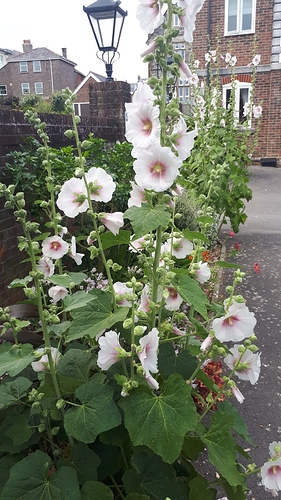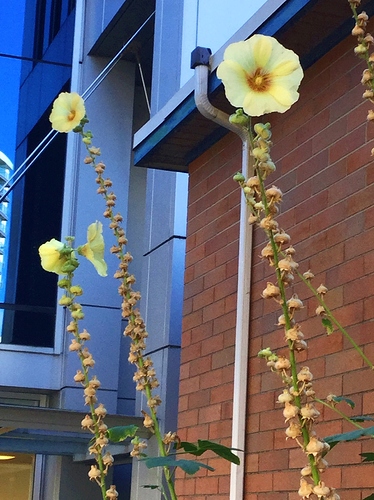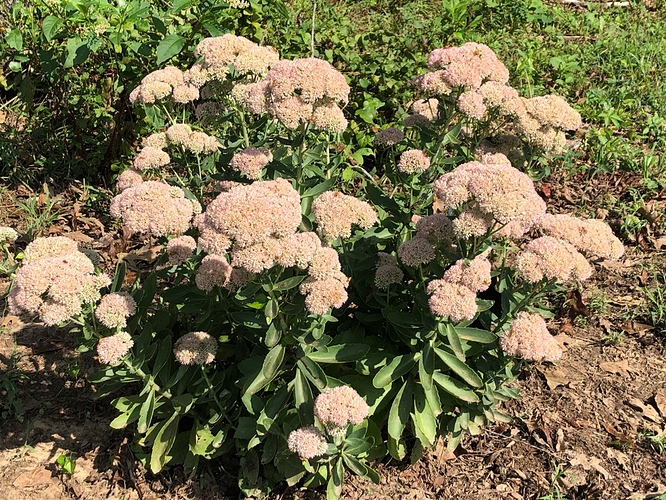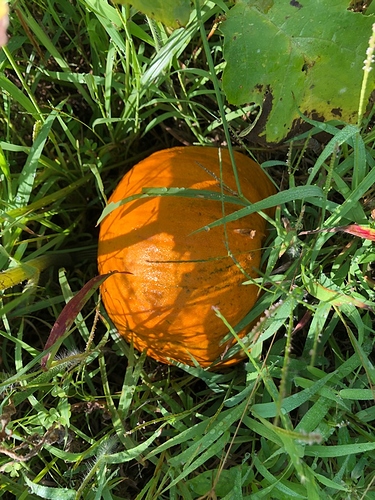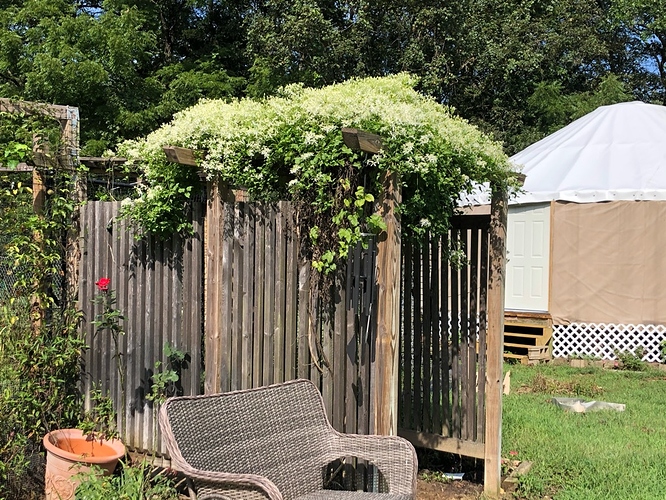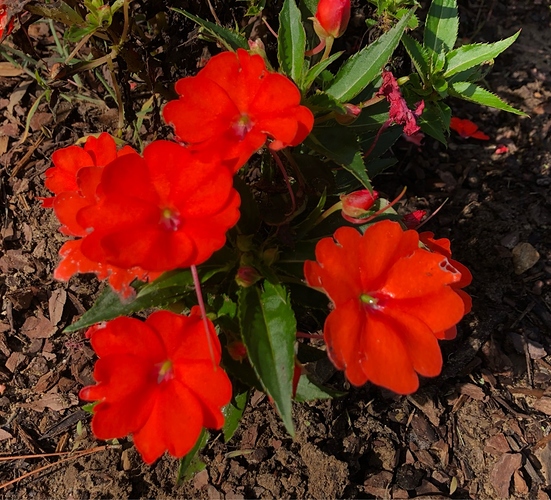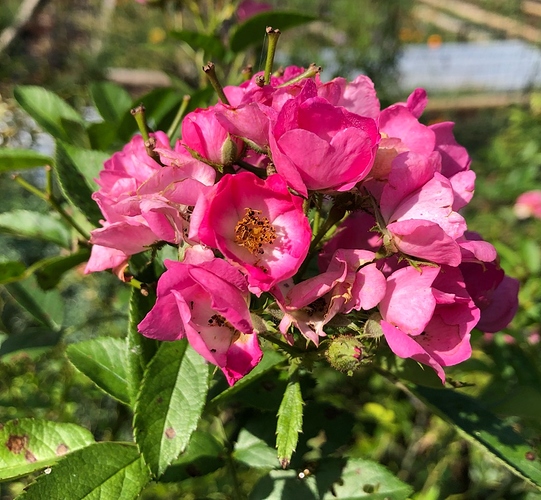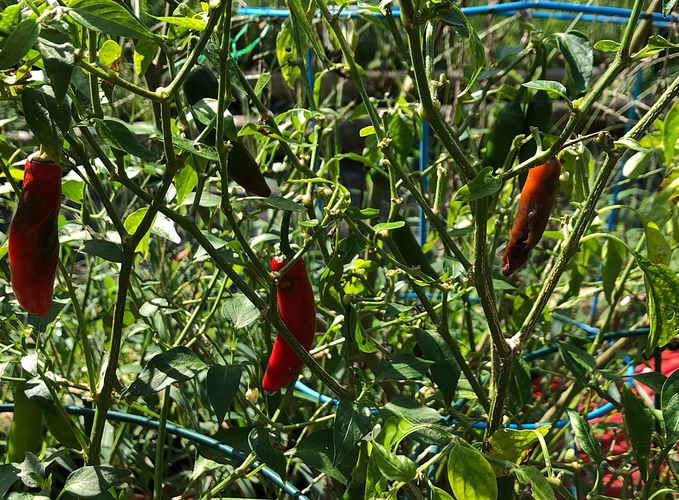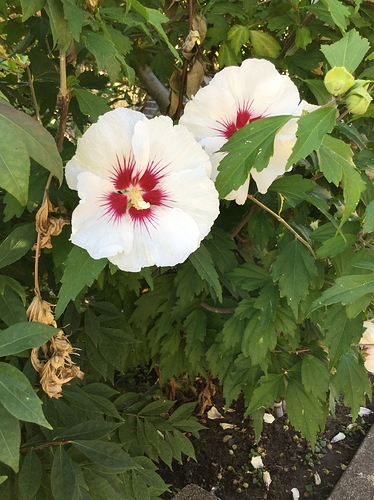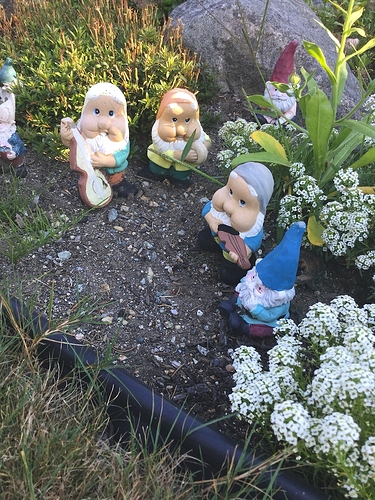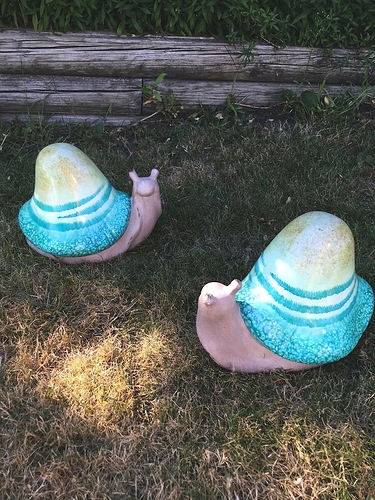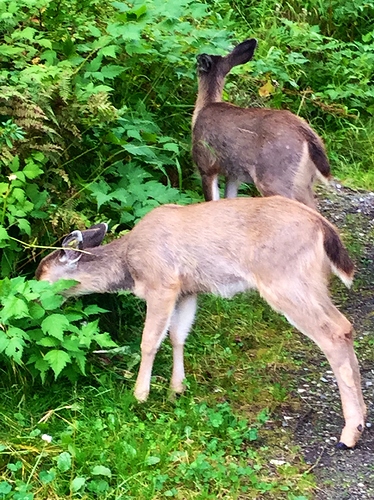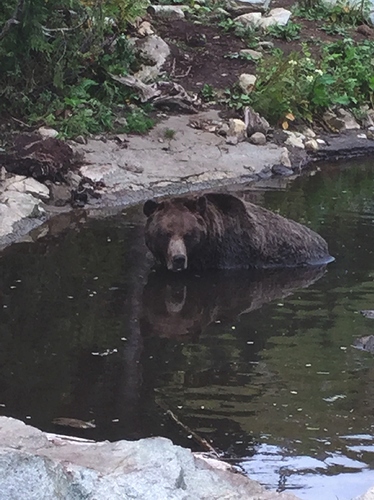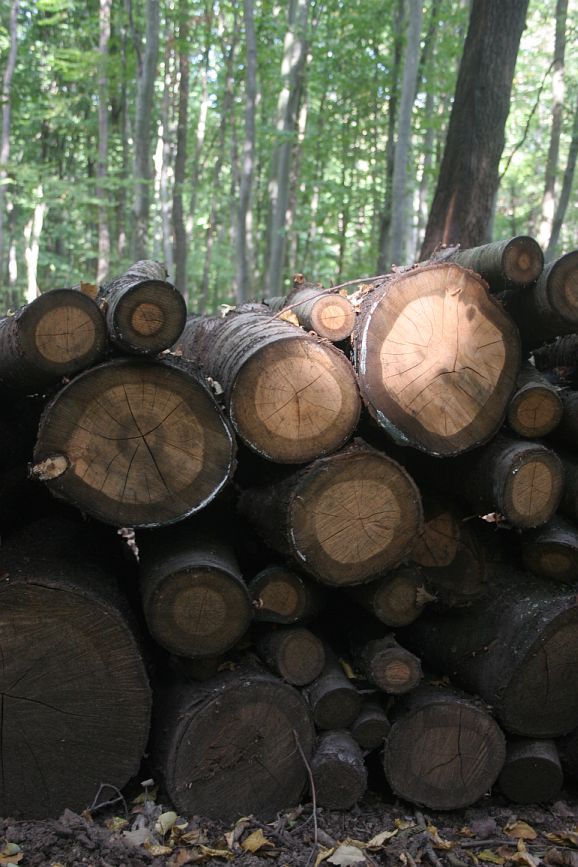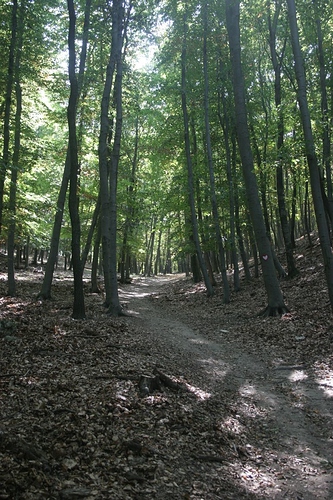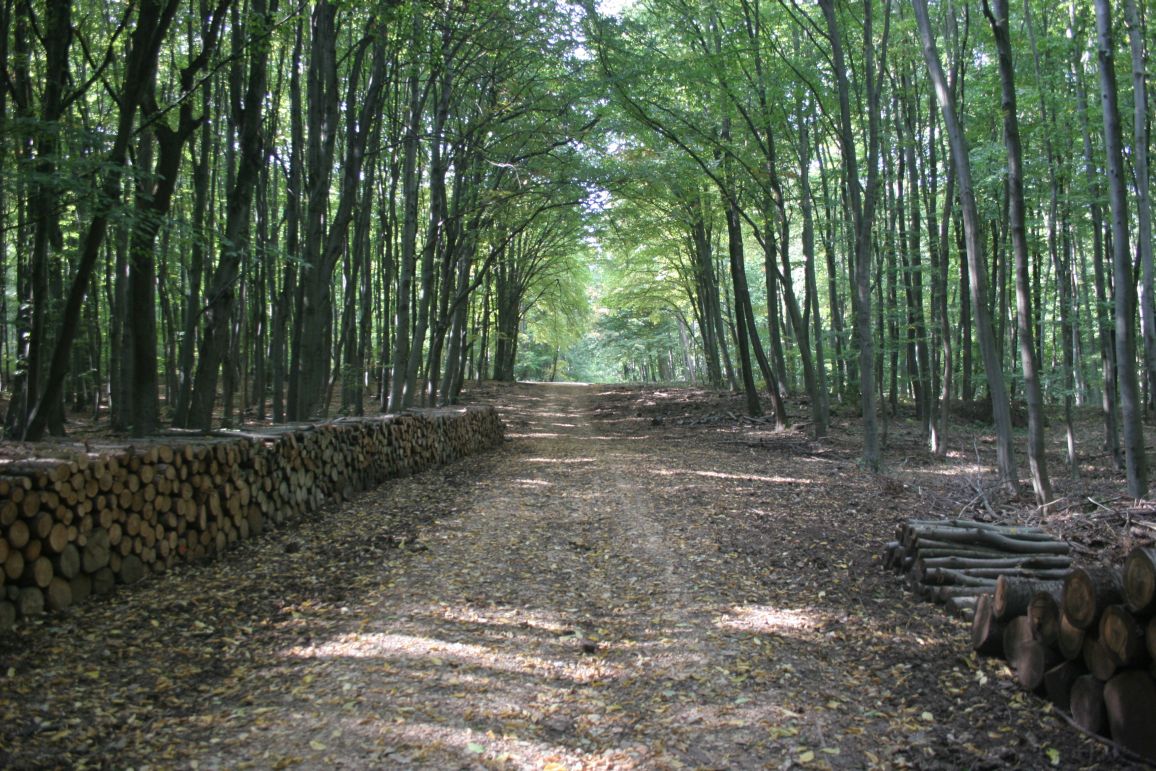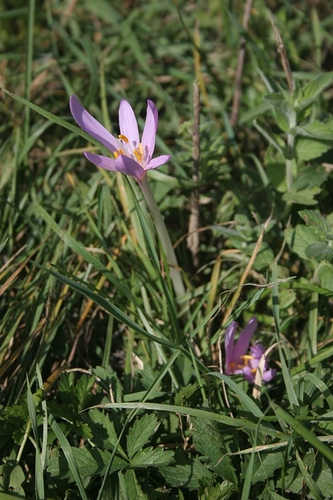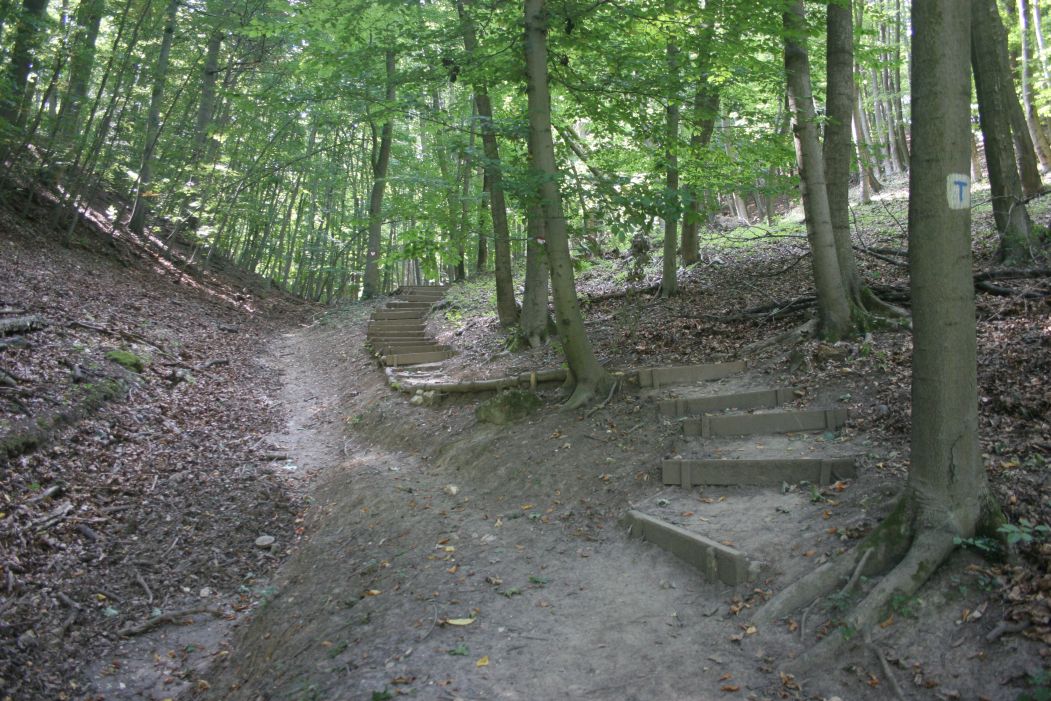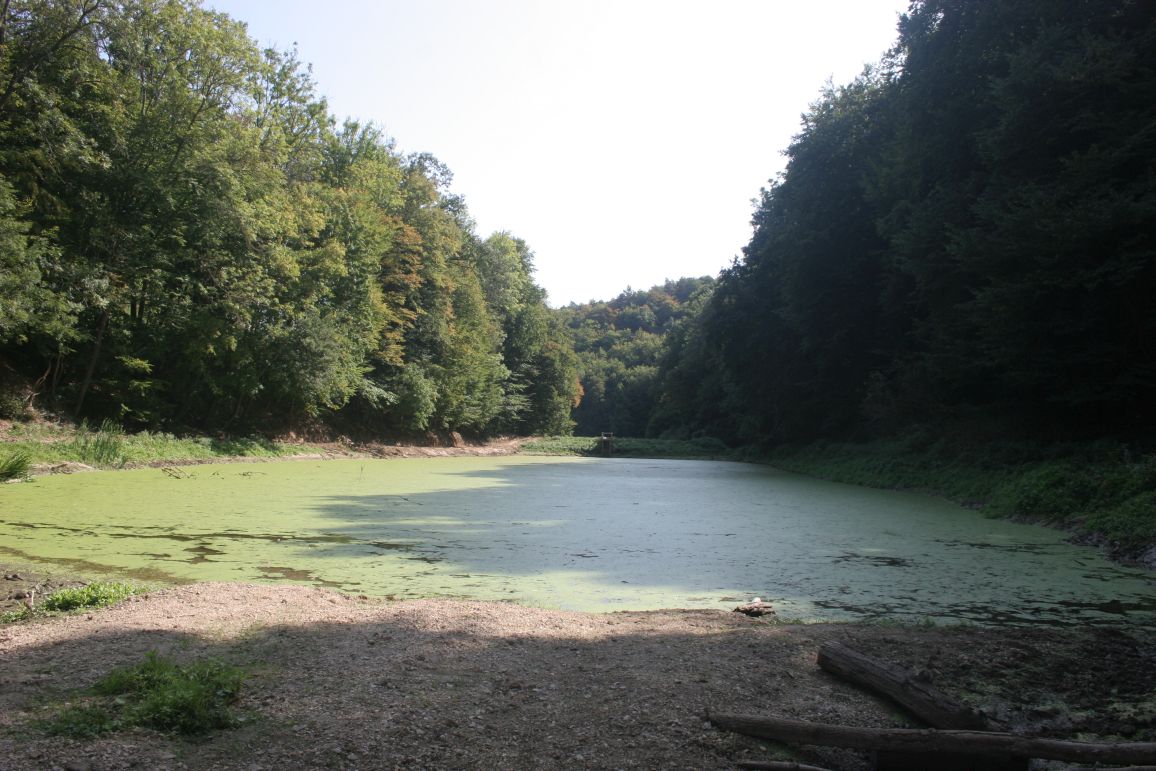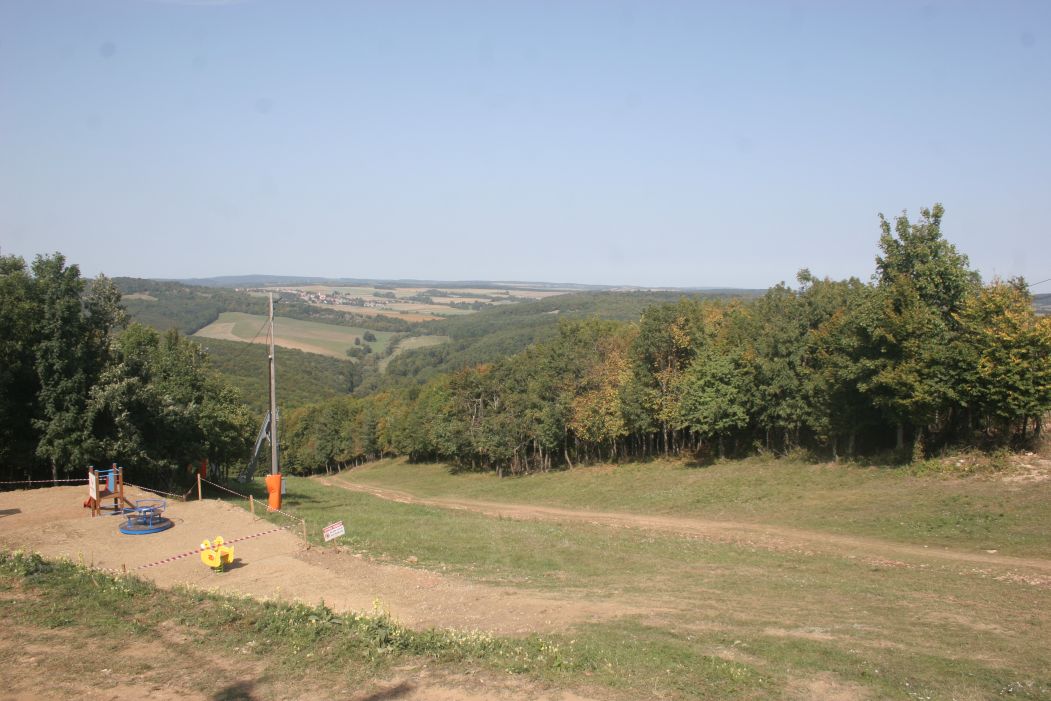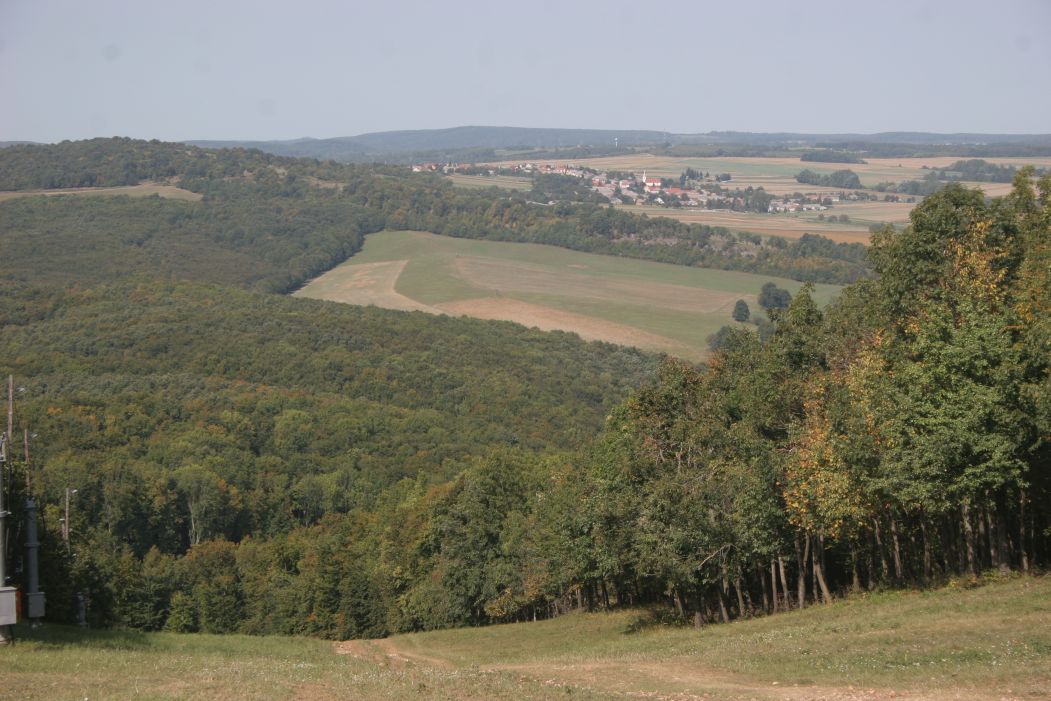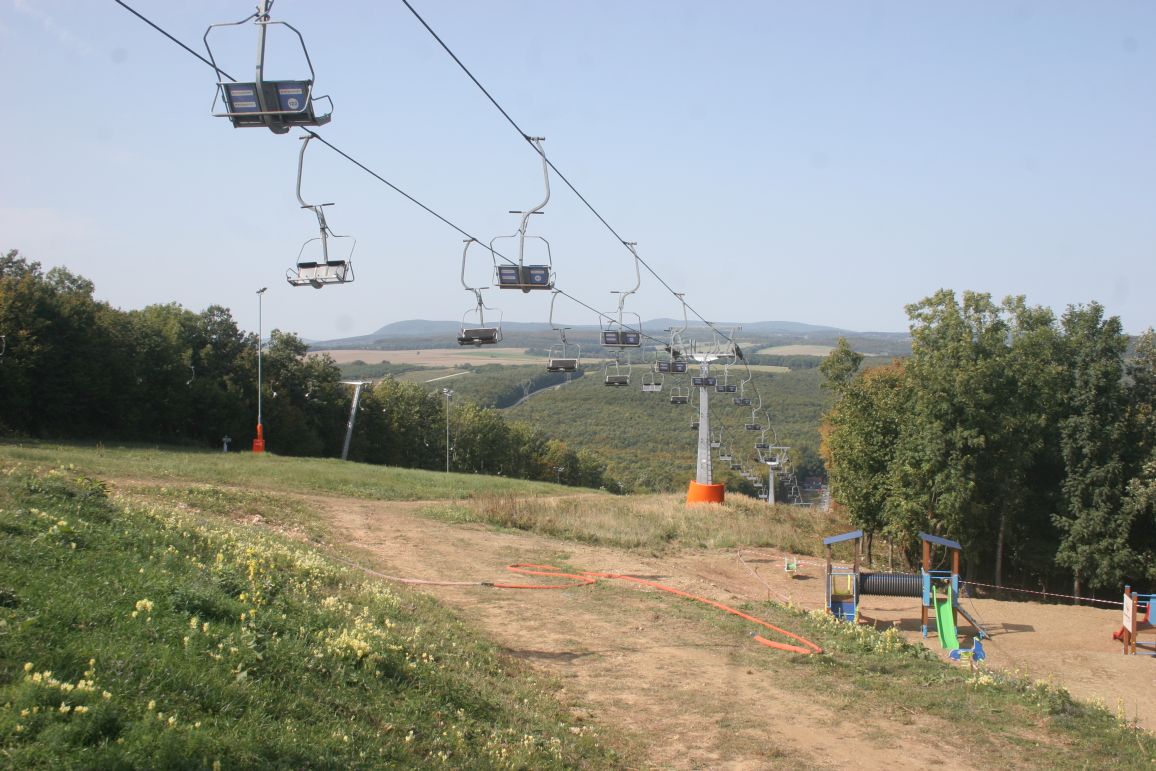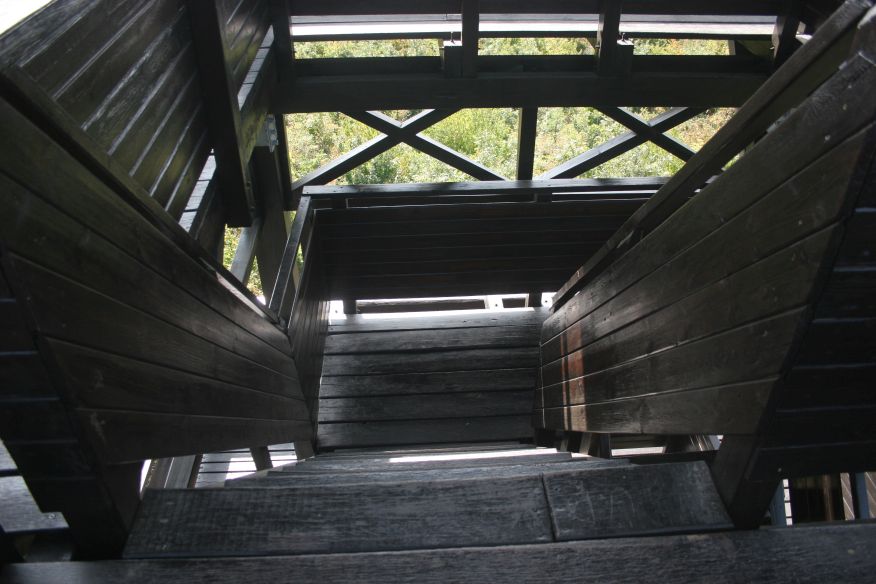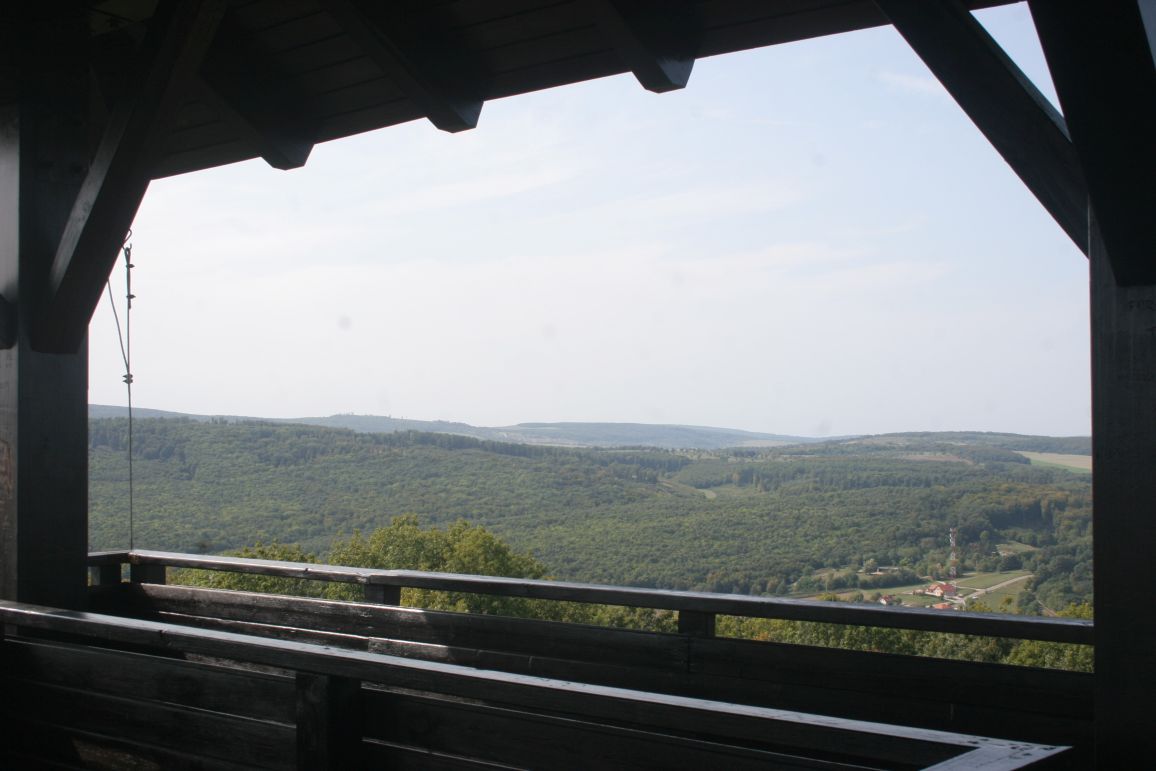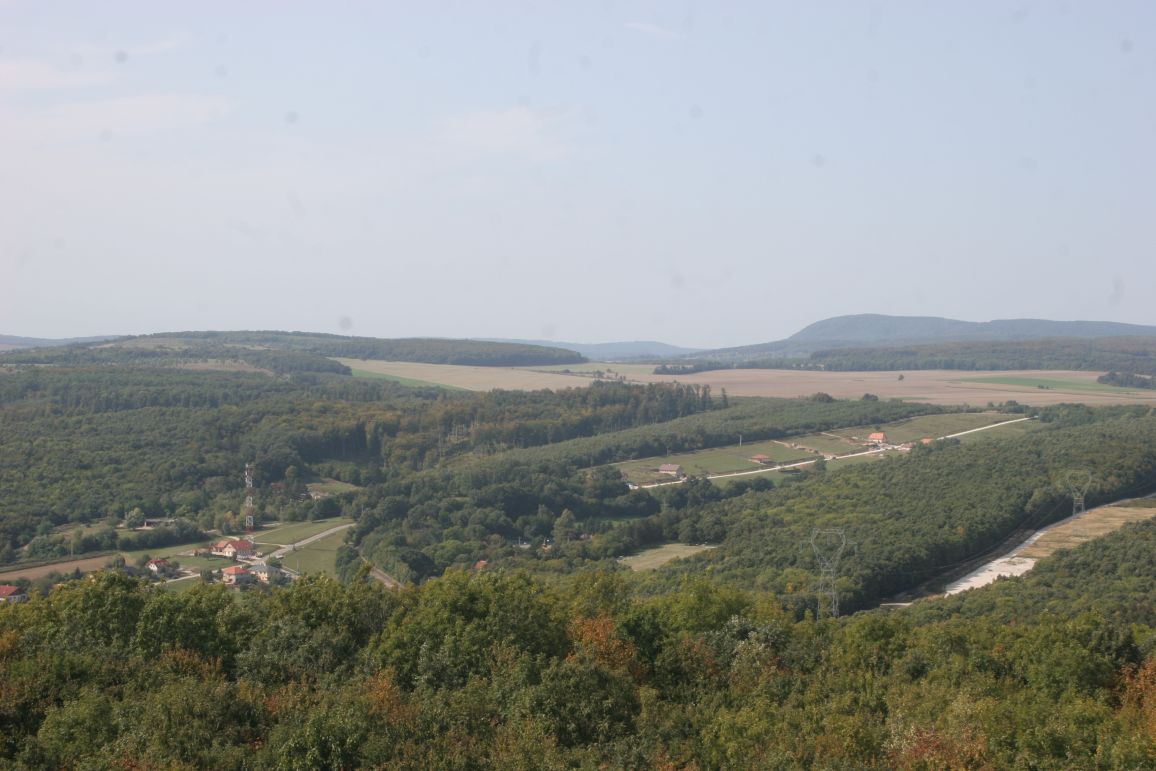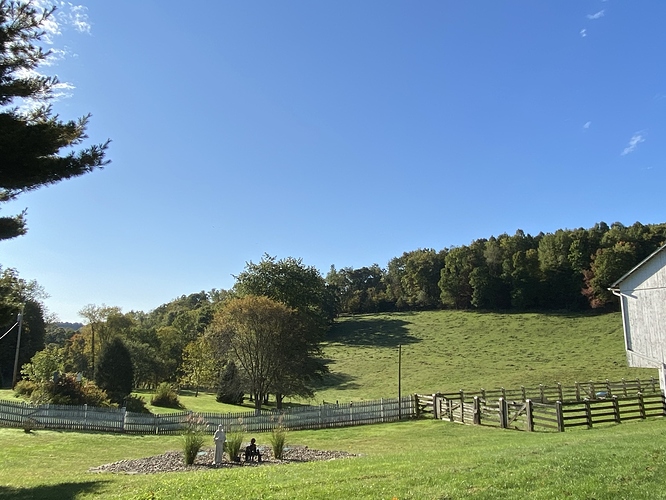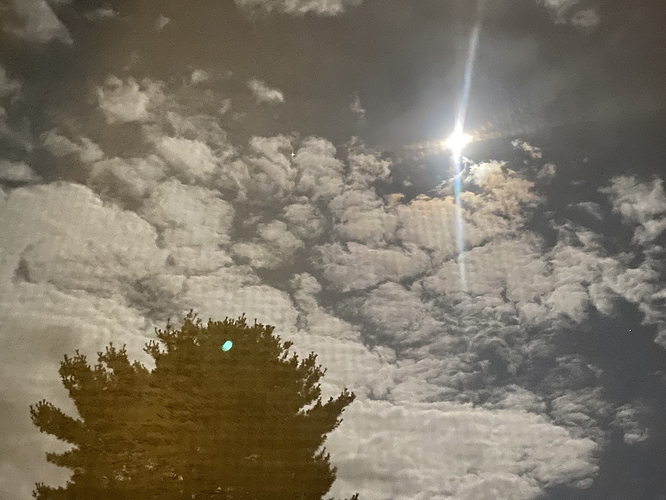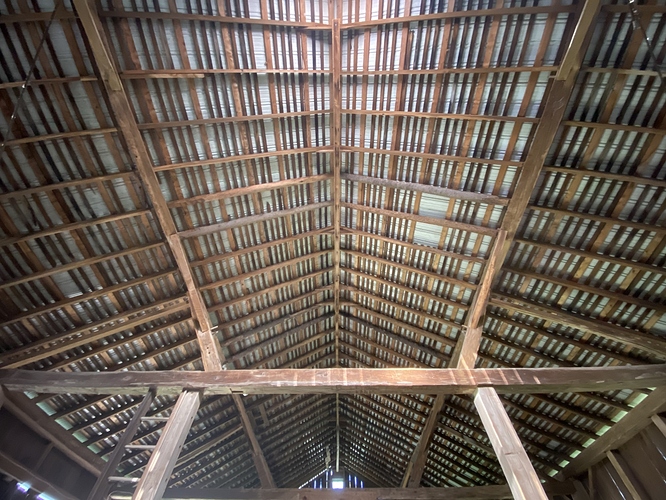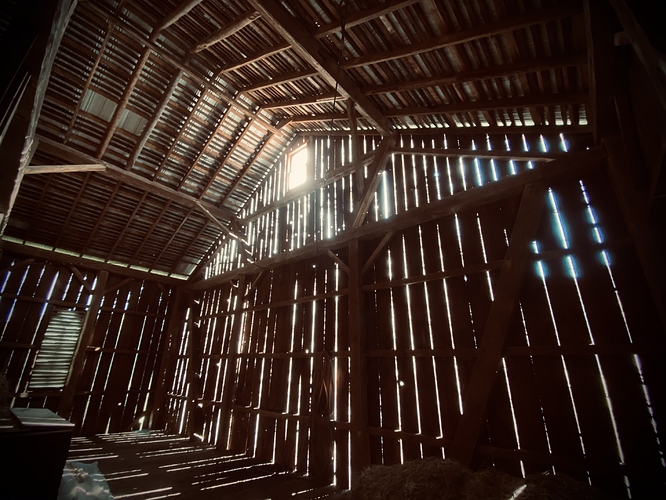First moonflower.
What did you take a photo of on your walk today? PART 2!
my second pass around this spot there were two turtles but the second one hit the water before I could take a picture.
I don’t know what this is. The stems are 6-7 feet long and covered full-length in bulbs which I presume are going to open into flowers. But only a single flower at the stem top end is in bloom at the moment. This is not far from home so I can keep watch to see how it develops. If anyone knows what this is please let us know. Thanks.
I forgot you are in Canada - too cold for tropical Hibiscus so I am going with a variety of Rose of Sharon (which I think is in the Hibiscus family but cold hardy)
Cool!
Coincidentally my neighbor brought me some hollyhock seeds yesterday along with a gift of a cool wasp trap made of glass. We keep them in fresh eggs so just some thoughtful reciprocation.
My hubby said it takes hollyhocks 2 years to bloom so I need to read up on how to start the seeds, when to transplant, etc.
Yes, they are biennial. We grow hollyhocks and fox gloves and they do little first year, you get a wonderful bloom the next, then they are tiny, and if you are really lucky, they bloom again, but the plant is usually not as tall as the it was for the first bloom. We just keep reseeding the area, to keep things moving along.
Thanks for the info. So I need to save the seeds every year to have them blooming every year after the first year? Should I start the seeds indoors in pots?
I read they are a close family to okra. I can see that - okra grows tall and its yellow flowers do resemble hollyhocks.
We lust let the seeds fall to the ground and we always have a few plants that make it through and we can get -20F temps here. I think our winters are more severe than yours, so they should do fine in your area.
Hollyhocks, hibiscus, okra, cacao and rose mallows are all related, in mallow family. Those are some of my favorite things too.
As of Sep 02, 2020. Not much change in a week, however, a lot of buds look like they’re getting close to opening.
Sedum starting to bloom
Sugar pie pumpkin
Arbor flowers blooming
Sunpatiens
Rose bush that blooms in round clusters
Last peppers of the season
Oh wow, that is soooo awesome that the three of you got together and had this adventure together, soooo cool =)).
Went to Grouse Mountain yesterday evening. The deer family were rummaging about the patio/rink near the chalet. The bears were in their enclosure and for the longest time didn’t feel like coming out of the trees. But eventually one of them did so.
We went for a little hiking in the weekend. I was pretty lazy with the photos, I just made them smaller and that’s about it… But here they are! We saw a lot of flowers, it seems the English name is autumn crocus, I never knew… The first pic shows cherry tree trunks, they are interesting.
I found lots of tiny native orchids on my Saturday walk. It was freezing, almost sleeting
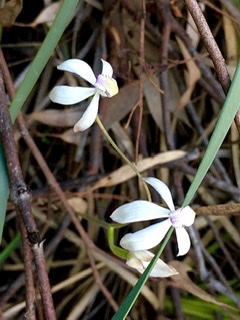
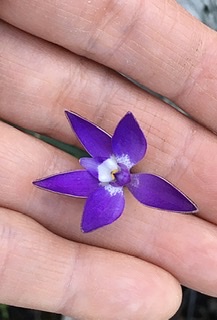
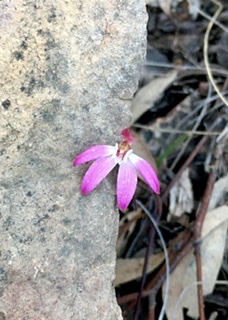
The old homestead. This was a good place to grow up.
Last night’s moon, through a window with a screen behind it.
Inside the barn, looking at the underside of the roof.
In this situation, the camera picks up more of the difference in the light between clouds and a blue sky than does the human eye.

